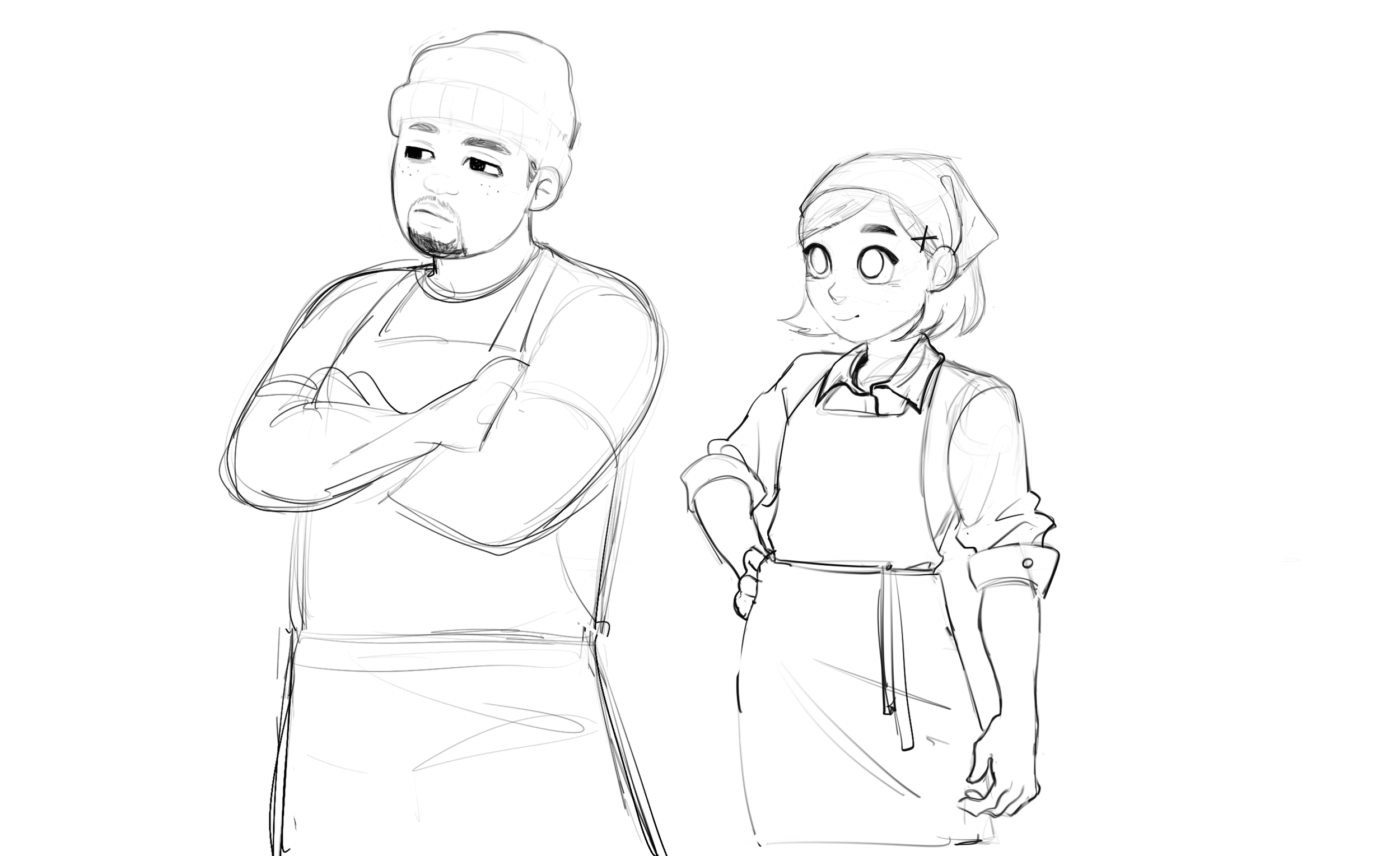
INTRODUCTION
Lunch Rush is a game concept that combines cooking simulators with rhythm-based gameplay, where players must meet the demands of a bustling restaurant by cooking meals to the beat. For this project, I challenged myself to develop a design brief for a fictional game, designing all assets from scratch while integrating game mechanics from both genres.
RESPONSIBILITIES
Character and Environment art, UI Design, Logo Design, Concept and Game Design
TOOLS
Figma, Clip Studio Paint, Adobe Illustrator
Game Screens
Swipe Notes
Tap Notes
Song Results
Support Menu
Support Dialogue
Equip Skills
Main Menu
Visual Development
Lunch Rush’s visual style draws inspiration from the bold, vibrant colors seen in American diners and their charming hand-painted signs. I wanted the UI to feel bubbly and friendly, reminiscent of the rounded corners and curved architecture commonly associated with diners. The playful aesthetic complements the game’s colorful and welcoming visuals, designed to appeal to a wide age demographic.
UI ASSETS
CHARACTER DESIGN & ILLUSTRATION
Character designs were inspired by my firsthand experiences in kitchens, along with influences from popular media such as The Bear, Kitchen Nightmares, and Boiling Point. I wanted each character to feel like a real, hardworking person in a tough industry while still having enough visual personality to make players want to form a connection with them.
Game Mechanics
Lunch Rush blends rhythm gameplay with fast-paced cooking—players tap to the beat to trigger cooking animations. However, modern rhythm games go beyond the music, often adding gacha rewards, events, or online multiplayer modes. I realized early on that a rhythm game alone wouldn’t be enough to keep players fully engaged.
SCREEN FLOW
In addition to the main game, I decided to add RPG elements, like the ability to equip skills, as well as a dating sim feature. By building bonds with the characters, players can unlock character-specific abilities and upgrade those skills to enhance their gameplay.
I created a screen flow chart to keep track of the different elements I wanted to include, and to visualize how players would navigate these features.
Outlining the interactions and UI animations helped me refine how features would be presented and how movement would be conveyed in the final game screens. I also used wireframes to explore different rhythm game mechanics and how they might play out visually.
























